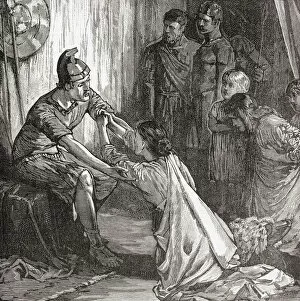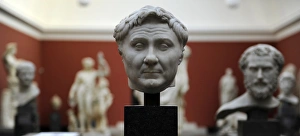Gnaeus Collection
"Gnaeus: A Name that Echoes Through History" From the bust of Pompey, a military and political genius of ancient Rome, to Gnaeus Marcius Coriolanus
All Professionally Made to Order for Quick Shipping
"Gnaeus: A Name that Echoes Through History" From the bust of Pompey, a military and political genius of ancient Rome, to Gnaeus Marcius Coriolanus, a renowned Roman general from the 5th century BC, the name "Gnaeus" holds great significance in the annals of history. Pompey the Great, also known as Gnaeus Pompeius Magnus, was a distinguished leader during the late Roman Republic. His military prowess and political acumen earned him immense respect and admiration. As depicted in Crabbs Historical Dictionary published in 1825, Pompey's legacy is immortalized through his victories on numerous battlefields. In his younger years, Pompey displayed exceptional talent and ambition. The image captures his youthful vigor and determination that would later propel him to greatness. One notable event etched into history is when General Pompey entered Jerusalem's Holy of Holies in 63 B. C. , leaving an indelible mark on both Roman and Jewish narratives. Julia Caesaris, daughter of Julius Caesar and wife of Pompey the Great, played a significant role in their alliance. Her aquatint portrait showcases her elegance and influence within this powerful union. However, even legends face defeat at times. In Pharsalus in 48 B. C. , Pompey suffered a crushing loss against Julius Caesar's forces. This wood engraving depicts this pivotal moment with striking detail. Despite setbacks like Pharsalus or moments of vulnerability captured by various busts throughout time – including one featured in line engravings after a Roman portrait – Gnaeus remains an emblematic figure who shaped ancient Rome's destiny. The name "Gnaeus" reverberates through centuries as it represents not only military might but also political astuteness—a testament to its enduring power within historical discourse.











